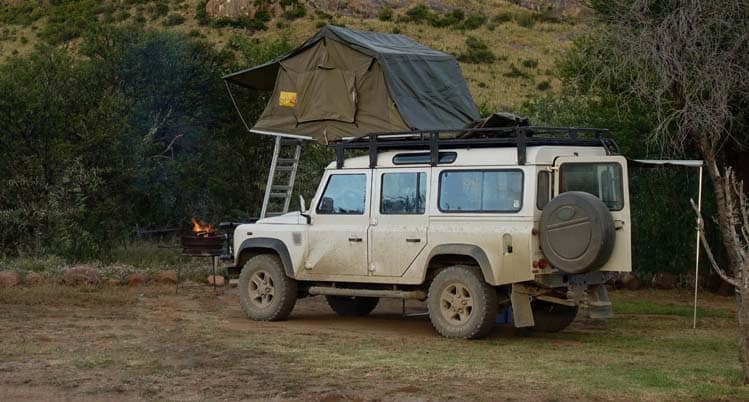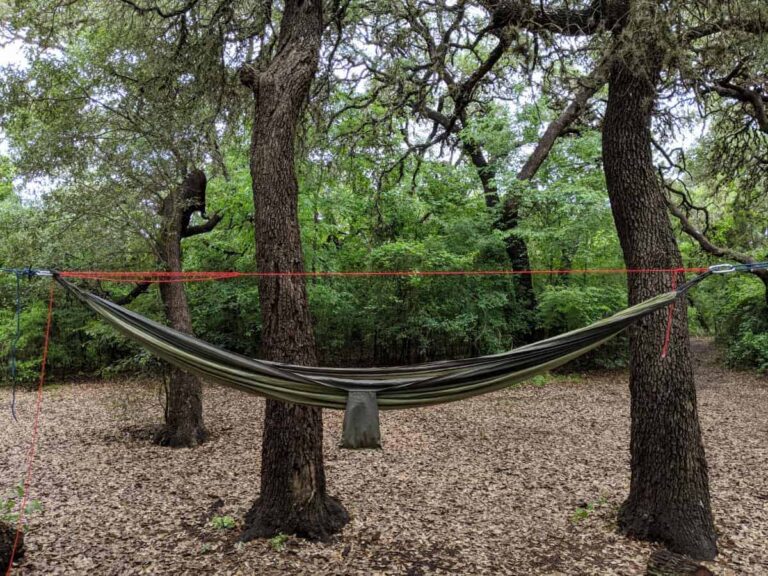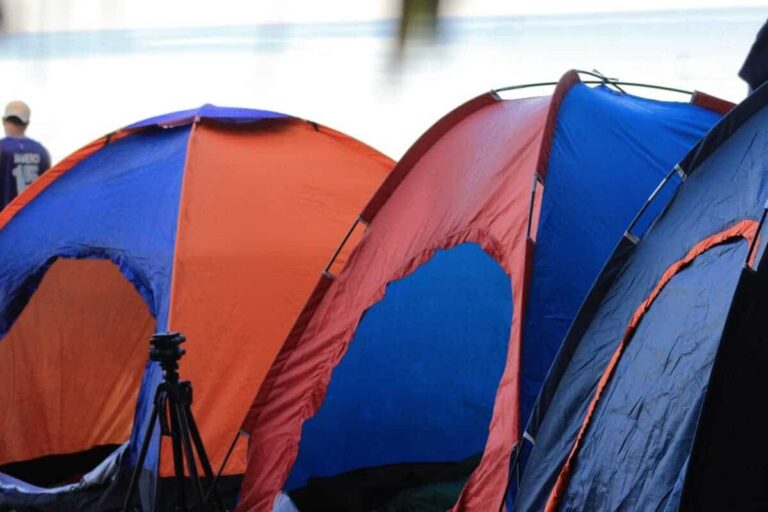Why Are Camping Fridges So Expensive?

There are only so many ways to keep food cold while camping. The first, and cheapest way is camp in the snow, during the winter. Since that’s not for everyone, the second way is to get that cheap cooler, fill it with tons of ice and enjoy your food quickly before all the ice melts. Another, better alternative is to invest in a camping fridge, which will be able to keep your food cold for as long as you’re camping.
The main reason why camping fridges are so expensive is that while they appear like just a high-tech cooler, instead of passive cooling like a normal cooler, they actively cool, using a small compressor (like a miniature version used in a normal refrigerator).
Also, to run efficiently camping fridges are designed with extra insulation and made to run on AC power (from the wall outlet), DC power (like the cigarette lighter port in a car) and even solar power. Many of them also have other convenient features, like USB ports for plugging in phones and other small devices. Some can even be controlled with your smartphone.
The Main Reasons Why Camping Fridges Are So Expensive
- They are actively cooled using a small, efficient compressor.
- They have to be designed to be more efficient, with extra insulation.
- They must accommodate different power sources (like power from a car or solar panels).
- They often have other features of convenience, like USB ports, or the ability to be controlled by a phone.
- Some of the more expensive models can even have a pin code to lock the contents from sticky fingers.
Is the Price For Camping Fridges Worth It?
Many people who own a camping fridge swear they can’t live with out it, but it is important to do your research to find a reliable model with the features you want, that can effectively keep your food and drinks nice and cold.
While ice can keep your food cold for a while, it eventually melts, which means you either have to go and do another ice run, or go without cold food. If you’re only camping for a day or so, that might be fine, but if you’re on a longer camping trip, and you want to keep your food cold, then a passive cooler isn’t going to cut it. Unless you enjoy interrupting your camping trip by going to the nearest gas station every single day.
That said, it’s important to note that camping fridges do need power, which means either investing in some portable solar panels, or running the fridge on your car’s battery. While they are made to work with a car battery, it’s important to never use the car’s battery past 50 percent as it can cause damage to the battery (specifically a lead-acid battery), which means occasionally turning on the car and running it to recharge the battery.
The most power a camping fridge uses is when it is just turned on and is cooling itself to the desired temperature, after that it uses less power, and usually intermittently.
Some fridges actually have a battery protection system built-in to prevent draining the car’s battery too far, but you would have to check the fridge’s specifications, and read its manual to understand what its capabilities and limits are.
Due to these circumstances, specifically price and power, then a passive cooler might be a better option. Otherwise, there really no better way to keep your food and drinks cold when you’re out camping for the week.
How Long Can a Camping Fridge Run On My Car Battery?
It is actually not recommended to run a camping fridge off the main car battery for long, since it’s used to start the car and isn’t designed to be drained very much. It wouldn’t be a good idea to run the fridge on the main car battery for more than a few hours without recharging.
An additional deep-cycle battery is better suited for this purpose. In one example a small 36 quart fridge could run anywhere from 49-82 hours, depending on the capacity of a battery. A larger 82 quart fridge would run for 39-65 hours on the same range of battery capacities.
For more detailed information about Offroad Aussie, which is a brand of camping fridge, you can check out some details here.
No matter what, in order to keep your car battery healthy when using a camping fridge, it’s a good idea to run your car periodically to recharge the battery.
Why Can’t I Just Buy One of Those Electric Coolers?
While cheaper, the powered coolers do not cool down food as much as they keep already chilled food cool without ice. Often, they can only keep their contents about 30°-40° Fahrenheit (17°-22° Celsius) below the temperature outside the cooler, which means the hotter it is outside, the less cool the contents will be. If you actively need to cool down or freeze your food, then the more expensive camping fridge is absolutely essential.
How Much Do Camping Fridges Weigh?
Camping fridges can be heavy. While the smaller ones commonly weigh just over 30 pounds (about 14 kilograms) the heavier fridges can weight more than 70 pounds (32 kilograms). This means that while the smaller ones can be hefted by a single person, it’s definitely a good idea to get some help moving around one of the larger fridges.
What Size of Camping Fridge Do I Need?
This is an important question, and completely depends on your needs. If it’s just you and maybe someone else, and you’re only camping for a day, then the smaller 26-37 quart (24.6-35 liter) sized fridge would be fine, especially if you don’t plan on bringing much refrigerated food and drinks. No matter what, though, if you have a family, and/or are planning to stay out for a while than larger fridges 50-82 quart (47.3-77.6 liter) size, would be appropriate. Just remember the bigger the fridge the more power it will use.
What Vehicles Can I Run a Camping Fridge On?
Since most vehicles have a DC outlet (often referred to as a cigarette lighter socket or accessory socket) then they should be able to run a camping fridge, but it’s important to know how much energy capacity your battery has so as to not over drain the battery using a camping fridge.
Can I Run a Small Refrigerator On A Power Inverter Instead?
While it actually is possible to run a small, efficient refrigerator with an inverter connected to your car, you really have to pay attention to how much power the refrigerator uses and should know that refrigerators use a quick surge of power when starting up which is around three times the amount of power they usually use.
You also need to know how much power your inverter can – well invert from a DC current to an AC current. Inverters usually show two capacity values. The ‘continuous wattage’, which the inverter is capable of sustaining as long as there is DC power flowing in, and the ‘peak surge wattage’ which is how much power the inverter can supply for a split second surge.
Lastly you should again pay attention to how much energy capacity your battery has, as a small refrigerator is made to use power from a normal wall outlet and therefore won’t be as car battery friendly.
For more information about how to calculate this information you can check out homeguides.sfgate.com here.
All that said, because a small refrigerator is not designed to be run using a car, it’s probably a better idea to invest a little more and get a camping fridge which is designed for car use, and can often keep food cool even if there isn’t power for short spans of time because they are so well insulated.




